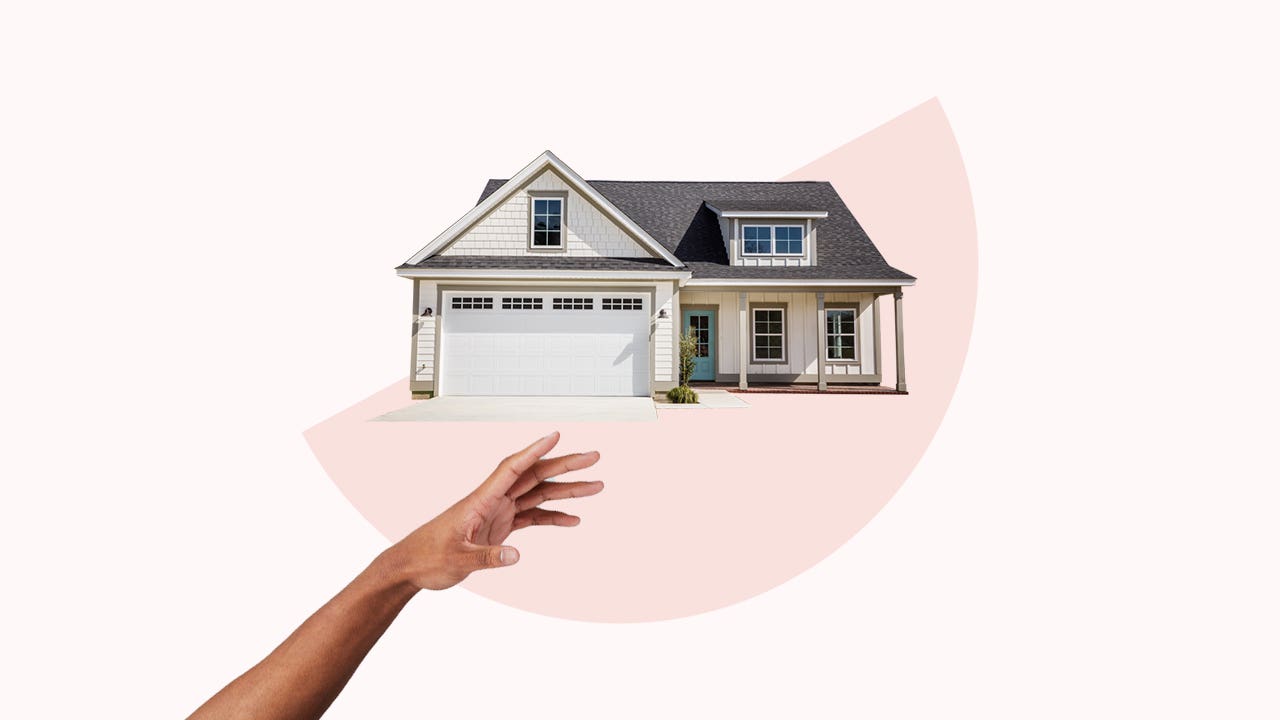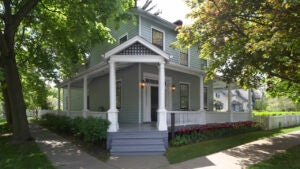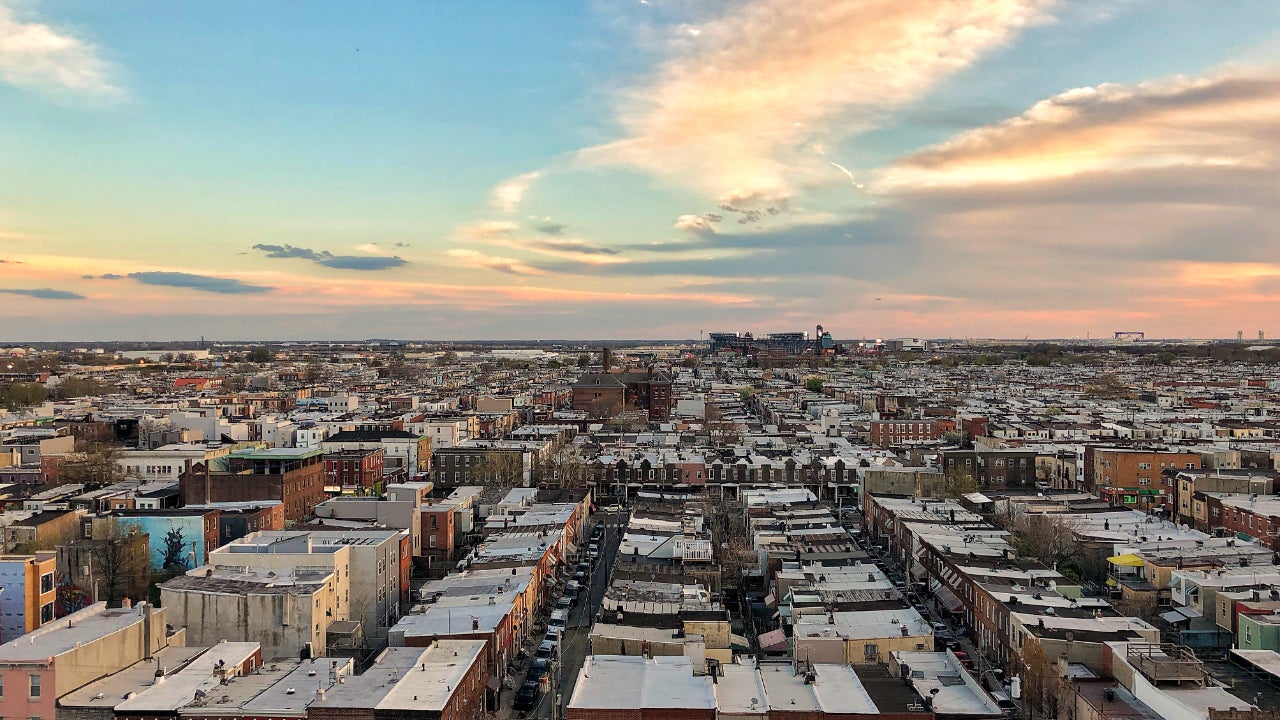Homeownership is getting unaffordable for the middle class

Remember that classic image of a smiling couple with two kids, a dog, and a house surrounded by a white picket fence? It symbolized homeownership — a desirable and highly attainable aspect of the American Dream. But today, that picture-perfect vision has become a badly faded photograph.
“I don’t mean to be overly dramatic, but this housing crisis has shattered the American Dream for a lot of middle- and low-income families,” says Sarah Dickerson, assistant research professor and research economist at the University of North Carolina’s Kenan Institute of Private Enterprise. “Middle-class households can afford a much smaller share of available homes on the market than they could have prior to the pandemic.”
Is Dickerson being overly dramatic? I don’t think so. Not only is the number of first-time homebuyers at a record low, but home affordability is also the worst it’s been since the 1980s. And the long-term consequences can be grave. Homeownership is about more than having a place where people can rest their heads. When middle-class families can’t afford to buy a home, they miss out on a chance to build wealth and stability for themselves and future generations.
What brought about this state of affairs — how did homeownership get to be so unaffordable for so many Americans?
What’s making homes unaffordable?
A confluence of factors is keeping homeownership out of the reach of middle-income families: inventory challenges, weak wage growth, high mortgage rates and increased maintenance costs, just to name major ones. Let’s look at the impact of each.
Lack of supply
While housing inventory has been inching up recently, we’ve been facing a serious shortfall of supply for quite some time — as much as 5.5 million homes, according to some estimates. That’s largely due to a decline in new builds that dates back to 2008, when the subprime mortgage financial crisis triggered the Great Recession.
“The housing bubble burst and in that subsequent period, we did less construction for a period of time,” says Kyle K. Moore, an economist at EPI Action, a nonpartisan nonprofit that generates research and analysis on economic and labor issues. “That was also exacerbated in 2020 with the pandemic when there was a crunch [in] supply brought about by an increase in the price of building materials.”
It’s not just a shortage of homes in general, but of modestly priced homes in particular: The tough times caused many home builders to focus on the luxury market. As a result, fewer homes are available in the middle-class price range, driving up competition and prices even further. We need more of the ‘missing middle-income housing’—medium-density housing options like starter homes or townhomes that the average family can afford.
Stagnant wages
While the pandemic-frenetic pace of sales has eased of late, home prices continue to rise, hitting all-time highs month after month. And they’re increasing faster than wages for many Americans, creating a widening affordability gap. Want to buy the typical median-priced home? “Median” now means $400,000+— so good luck if your W-2 doesn’t report six figures in wages. That’s a sobering thought, given that the median salary in the third quarter of 2024 was only $60,580, the Bureau of Labor Statistics reports.
“If you go back all the way to the 1950s and 1960s, the average home price was just a little over two times the average salary of a family,” says David P. Weber, a professor of law at Creighton University. “Even five years ago, it was about four to five times the average income.
“Now, it’s about six times the average income and that’s with inflation-adjusted dollars. The cost of homes has grown at a rate that outpaces any growth in income and that’s a really big part of the problem.”
Expensive mortgages
Most people don’t pay for a home outright, of course — they finance it. And that brings us to another problem: the high cost of borrowing. Super-low (think 2-3 percent) during the pandemic, mortgage rates began rising dramatically in mid-2021, when the Federal Reserve started increasing interest rates to combat inflation. They’ve softened some since, but stayed stubbornly high overall. In fact, despite the Fed’s rate cuts in September and November, mortgage rates climbed to 7 percent for the first time since the summer.
When interest rates are high, fewer buyers can afford the monthly mortgage payments for homes priced at current market values. What about the upfront money you need, for the down payment and closing costs? According to Bankrate’s 2024 Down Payment Survey, more than half of aspiring homeowners can’t afford these cash outlays because of the high cost of living and low incomes. Small wonder: On that median-priced $400,000 home, the proverbial 20 percent down payment comes to a whopping $80,000. Even a 3 or 3.5 percent down payment, which some loans allow, commands a five-figure sum.
At the same time, homeowners don’t want to let go of those record-low mortgage rates they secured during the pandemic, so they’re not selling their homes. “If they were to try to reenter the market now, it would be hard for them to find something that’s better than what they currently have or even comparable,” says Dickerson. “For anyone in a middle-class household who’s been patiently waiting [to buy a home], it’s still not an ideal time for them to find housing that is affordable for them.”
So elevated mortgage rates have been a double whammy for housing affordability, hurting both home sellers and home buyers, impacting both supply and demand.
A family earning the nation’s median income of $97,800 needed 38% of its income to cover the mortgage payment on a median-priced new home in Q3 2024.
Climbing ownership costs
It’s not only getting more expensive to buy, but also to own a single-family home in the U.S. Bankrate’s 2024 Hidden Costs of Homeownership Study calculates it costs over $18,000 a year to maintain the old (or new) homestead, up 26 percent from just four years ago.
Remember the 28/36 rule, which says a family shouldn’t spend more than 28 percent of their income on housing costs and no more than 36 percent on total debt? That traditional yardstick is obsolete. As Weber points out, “The average family is spending around 35 percent of their average gross pay on housing costs [alone]. That just means that all their other finances are going to be tighter as well.”
Ongoing homeownership costs typically involve not just mortgage payments but routine repairs and upkeep, property taxes and homeowners insurance. The latter, in particular, has shot up, too.
“The cost is astronomical,” says Daniel Smith, founder and CEO of Keepingly, a platform that helps people centralize all of their home management needs. “In some states, insurance alone has jumped 50 percent. These are the kinds of expenses people often overlook when they think about homeownership.”
The long-term impact of unaffordable homes
Add all these factors together — the shortage of homes, the high prices and down payments, rising interest rates and ongoing ownership costs — and you have a perfect, if unsavory, recipe for a home affordability crisis. As middle-income families try to balance all the aforementioned challenges, their financial outlook is grim.
Losing out on wealth-building
One of the biggest advantages of owning a home is the opportunity to grow equity and build wealth over time. The average mortgage-holding homeowner now has about $319,000 of equity, $207,000 of which is tappable (that is, the amount you can borrow while leaving a 20 percent cushion, as most lenders require). There’s financial power in home equity. Homeowners can access the value of their homes without having to sell, which becomes more important as people age.
“For those individuals who haven’t been able to successfully save in their 401(k) or company retirement plan, when they look at end-of-life decisions and long-term care, that home is going to be the primary asset,” says Weber. “When that home isn’t there and when that equity is not there to tap into, now we have a potential problem down the road. These individuals who weren’t able to generate that wealth, they’re still going to need care as they get older. How is that going to be funded?”
Nothing to pass down
The inability to afford a home doesn’t just affect today’s families; future generations are also at risk.
A home is often the most valuable asset people own. Homeownership is not a perfect method of wealth transfer, as the housing market can be unpredictable, and property values do fluctuate. Nevertheless, as Moore notes, “it’s probably the best tool in our toolbox” when it comes to building generational wealth. It’s the groups that have historically been excluded from homeownership that may be the biggest ones missing out.
While housing equity drove increases in wealth for Black Americans from 2019 to 2022, only 44 percent of Black people own a home. And the wealth gap just keeps getting wider. There is more than a $240,000 wealth disparity between median white and Black households.
“We possibly could have a generation who does not have the wealth to pass on in communities where we already have a wealth gap,” says Smith. “They are going to be the ones who are most affected unless they can find additional pathways to generating wealth.”
How the housing crisis hurts the middle class
The longer the housing market remains unaffordable, the longer it will take middle-income families to build wealth and become financially secure. According to research from the Urban Institute, householders who buy their first home by age 35 build substantially more housing wealth by the time they turn 60 than those who buy later. The housing crisis has many aspiring homeowners sitting on the sidelines, waiting for a day that may never come.
Delayed wealth-building can also affect middle-income families’ ability to save adequately for day-to-day necessities and financial milestones like retirement. The lack of a home can also have a significant impact on emotional and mental well-being.
“We know that housing stability is associated with higher stress levels in both children and adults,” Dickerson adds. “When children are forced to move frequently throughout childhood, perhaps due to rising rent, they experience worse educational outcomes.”
To put it bluntly: The American Dream of homeownership is surrounded by walls that keep getting higher and wider for the middle class. We have to understand the impact – both immediate and long-term — of housing unaffordability and look for solutions to it — sooner rather than later. Until we do, an increasing number of families will find themselves on the wrong side of that idyllic white picket fence.
Questions, comments or thoughts about this article? Email me your feedback at lbell@redventures.com






